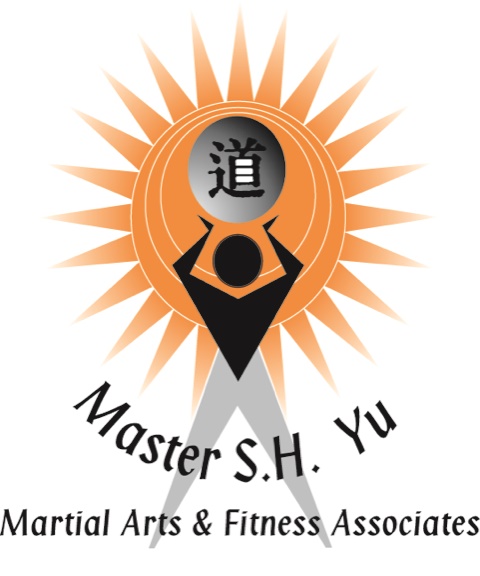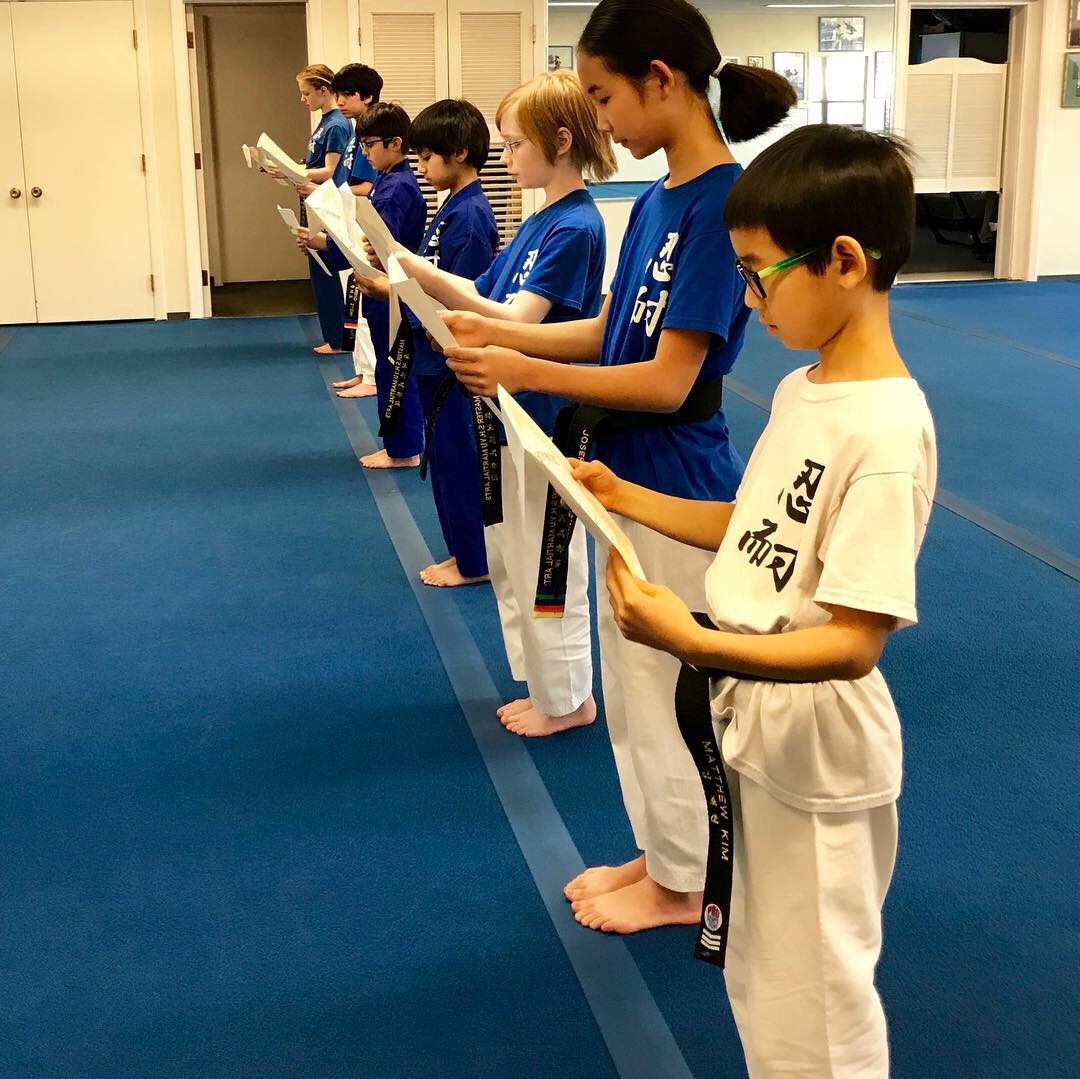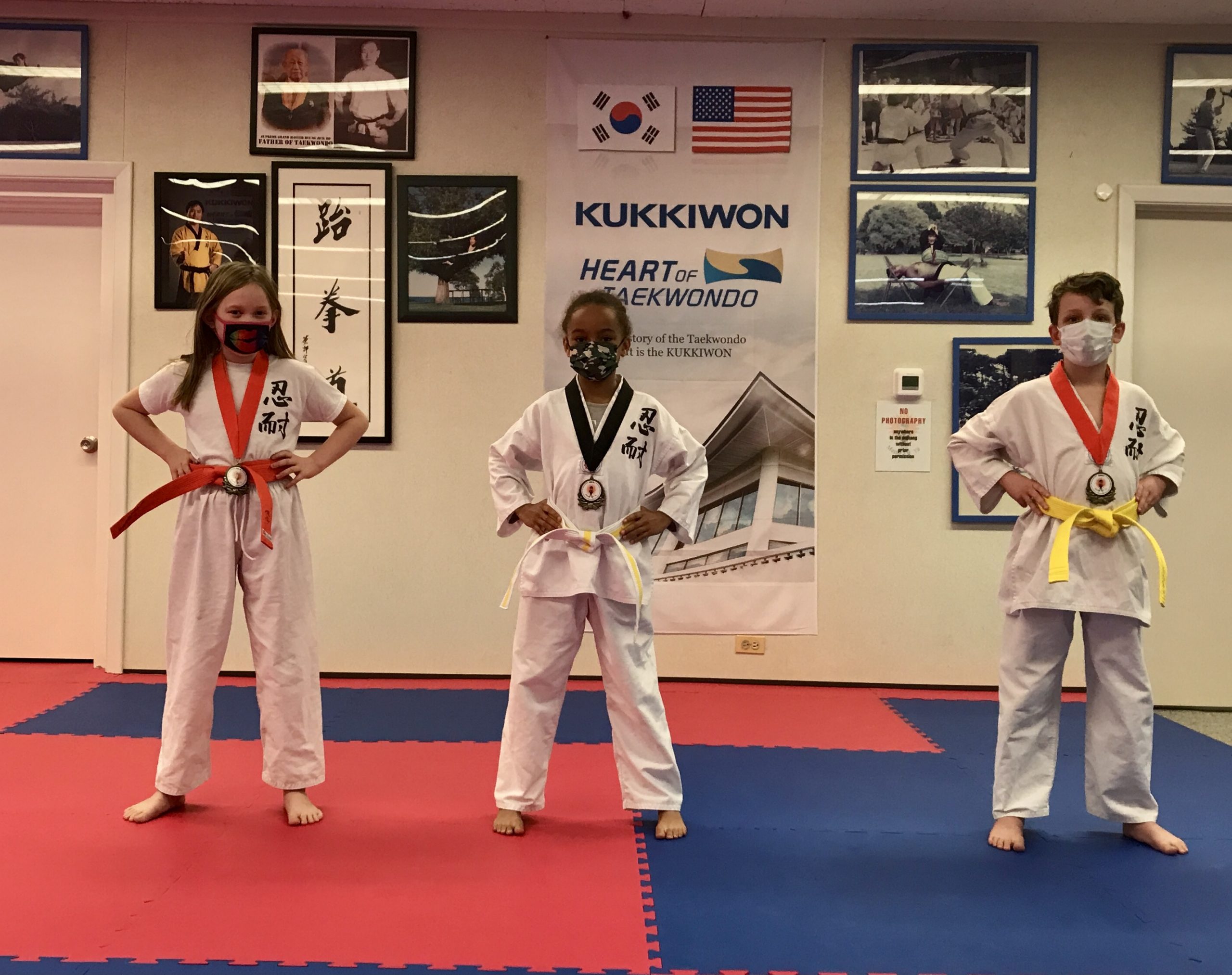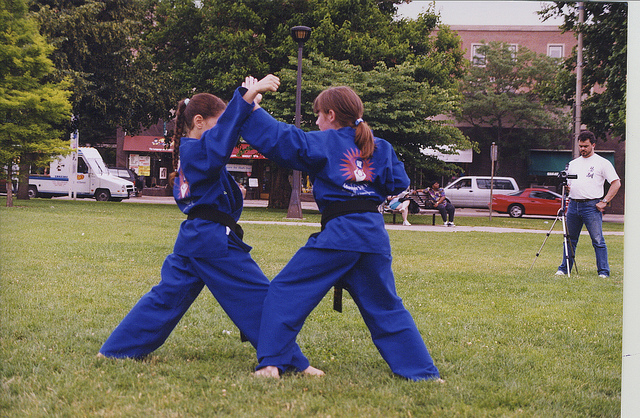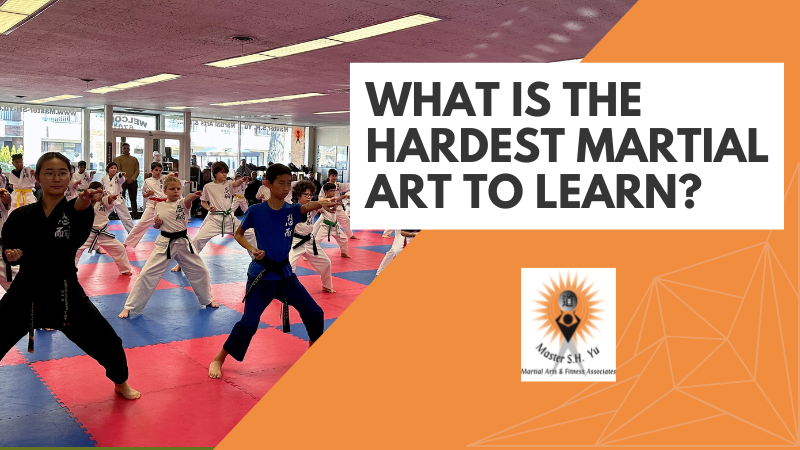
Which Martial Art is the Hardest to Learn? A GrandMaster’s Perspective
Updated on December 10th, 2025 at 09:43 am
Determining the hardest martial art to learn isn’t as simple as choosing the one with the toughest techniques or most demanding workouts. The challenge comes from the discipline, precision, mental focus, and time commitment required to develop genuine mastery.
According to Supreme GrandMaster S.H. Yu, who has dedicated nearly 60 years to studying and teaching traditional martial arts, “The hardest martial art is the one that challenges your weaknesses. Skill becomes mastery only through perseverance, accuracy, and discipline.”
While every martial art develops character and promotes nonviolence, certain disciplines require a far longer learning curve and a deeper level of internal refinement. Below is a full, expert-supported breakdown of which martial arts are hardest to learn—and why.
Key Takeaways
- Brazilian Jiu-Jitsu (BJJ): Generally considered the hardest martial art to learn due to its complex techniques, live resistance training, and long belt progression.
- Difficulty Varies by Style: Arts like Judo, Taekwondo, Karate, and Hapkido are challenging in different ways but offer structured, beginner-friendly progressions.
- True Difficulty Factors: Physical demands, technical precision, mental discipline, and long-term consistency determine how hard a martial art is to master.
- No Art Is “Easy”: Every martial art requires patience, proper guidance, and sustained practice to build real skill and confidence.
- Instruction Matters Most: Training under an experienced teacher—such as Supreme GrandMaster S.H. Yu—accelerates progress and ensures students learn with accuracy, respect, and authenticity.
Understanding What Makes a Martial Art “Hard”
Before evaluating individual disciplines, it’s important to recognize the factors that influence difficulty:
1. Physical Requirements
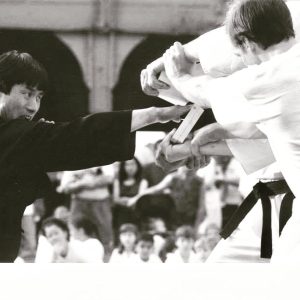
- Strength
- Flexibility
- Endurance
- Reaction speed
2. Technical Complexity
- Number of techniques
- Microscopic precision required
- Ability to transition fluidly between movements
3. Mental Discipline
- Focus
- Patience
- Emotional control
- Ability to remain relaxed under pressure
4. Time to Proficiency
Some martial arts have deliberate, slow belt progressions by design. Others require deep conceptual understanding to execute the techniques correctly.
5. Real-World Pressure
Disciplines with live sparring or resisting opponents (randori, rolling, free sparring) typically require more time to become effective.
While the ultimate goal across all martial arts remains self-discipline and defense, students have a wide variety of paths to choose from. From fast-paced striking arts to slow, deliberate forms, there are at least a dozen major martial arts practiced worldwide. Each has its own philosophy, movement style, and learning curve, but some are significantly harder to master than others.
Is Brazilian Jiu-Jitsu the Hardest Martial Art to Learn?
Many practitioners and instructors consider Brazilian Jiu-Jitsu (BJJ) one of the hardest martial arts to learn. Its difficulty comes from the combination of:
- Live resistance training: You cannot simply memorize BJJ. Every class involves rolling against resisting partners, which tests technique, timing, and resilience.
- Complex body mechanics: Students must use leverage, angles, and precision—not strength—to overcome opponents, which can take years to fully understand.
- Slow belt progression: A blue belt alone often takes 1–2 years. Black belts usually require 8–12 years of consistent training.
- No shortcuts: You cannot “muscle through” BJJ. If the technique is off even slightly, it will fail.
Despite the challenge, many students find BJJ incredibly rewarding because every breakthrough feels earned, meaningful, and transformative.
How Long Does It Take to Learn Brazilian Jiu-Jitsu?
Earning a black belt in BJJ typically takes 8–10 years, according to standards recognized by the International Brazilian Jiu-Jitsu Federation (IBJJF). Although this may vary by practitioner based on training frequency, dedication, quality of training, and instructor standards.
Why so long?
- Every technique must be pressure-tested
- Live sparring exposes weaknesses instantly
- Improvement requires constant repetition and refinement
Many students describe the journey as “addicting,” because each step in progress is deeply satisfying.
Physical Demands of BJJ
Brazilian Jiu-Jitsu places unique physical demands on practitioners because every technique must work against a fully resisting opponent. Training sessions often involve continuous pushing, pulling, scrambling, and maintaining control over a partner who is actively trying to escape or counter. This constant resistance develops strength, endurance, and mobility simultaneously, but it can also make early training feel overwhelming for beginners.
Many compare the experience to wrestling a moving weight that shifts unpredictably and pushes back with equal intensity. Over time, students learn to conserve energy, apply leverage correctly, and use technique rather than strength, skills that make training more efficient and more enjoyable.
Other Martial Arts That Challenge Students
While BJJ is known for its steep learning curve, several other disciplines also challenge students in unique and meaningful ways.
Karate
Karate blends powerful strikes with precise stances and controlled techniques that require consistent practice to execute correctly. Developing speed, accuracy, and whole-body power takes time, and while beginners can pick up basic forms quickly, true proficiency requires years of refinement.
Taekwondo
Known for its high kicks and dynamic movement, Taekwondo demands flexibility, balance, and sharp lower-body control. The athleticism required for advanced kicking techniques makes the learning curve moderate, with difficulty increasing as students work toward higher belt levels.
Judo
Focused on throws, leverage, and pins, Judo requires excellent timing, coordination, and adaptability. Live sparring (randori) builds resilience but also adds intensity, making Judo physically demanding and technically challenging.
Aikido
Aikido appears gentle at first glance, but mastering its flowing movements requires significant sensitivity, timing, and body awareness. The goal is to blend with an attacker’s momentum, which demands patience and years of technical refinement.
Krav Maga
Developed for real-world self-defense, Krav Maga trains students to react quickly, aggressively, and confidently in unpredictable situations. While techniques are straightforward, the intensity of training scenarios makes it one of the more demanding systems.
Tai Chi
Often misunderstood as a slow exercise style, Tai Chi is an internal martial art with deep complexity. Mastery requires precise posture, breath control, internal awareness, and subtle movement refinement, skills that are far more challenging than they appear.
Hapkido
Hapkido’s curriculum includes joint locks, throws, kicks, grappling, and weapon techniques, making it broad and technically demanding. Students must develop versatility and fluid transitions between movement styles, which increases the overall challenge.
Comparing Martial Arts by Difficulty and Focus
| Martial Art | Focus | Avg. Time to Black Belt | Difficulty Level |
|---|---|---|---|
| Brazilian Jiu-Jitsu | Grappling, Ground Fighting | 8–10 years | ⭐ Very Hard |
| Karate | Striking | 4–5 years | ⚡ Moderate |
| Taekwondo | Kicking, Speed | 5 years | ⚡ Moderate |
| Judo | Throws, Pins | 4–6 years | ⚡ Moderate |
| Aikido | Joint Locks, Redirection | 4–6 years | ❄️ Medium |
| Krav Maga | Real-World Defense | Varies | High |
| Tai Chi | Internal Energy, Flow | Varies | ❄️ Low–Medium |
How Long Does It Take to Advance in Martial Arts?
There is no quick path to mastery in martial arts. Progress requires patience, discipline, and consistent practice both inside and outside the studio. Students often revisit forms, reflect on lessons, train their bodies, and study martial arts philosophy to advance through the ranks.
Timeline estimates:
- Karate: ~4 years
- Taekwondo: ~5 years
- Hapkido: ~5 years
- Judo: 4–6 years
- Brazilian Jiu-Jitsu: 8–10 years
Each discipline challenges different aspects of the mind and body, which is why timelines vary.
Read: What is the Easiest Martial Art to Get A Black Belt In?
Why Your Instructor Matters More Than the Martial Art
No matter which discipline you choose, your rate of progress depends heavily on the quality of your instruction. A highly trained Master can identify subtle errors, correct technique before bad habits form, and provide cultural and historical context that deepens understanding. Proper guidance allows students to progress safely, confidently, and authentically.
Working with a knowledgeable instructor also builds discipline and character, qualities that carry beyond the studio.
Train with a True GrandMaster in Oak Park, IL
When you train at Master S.H. Yu Martial Arts, you’re learning directly from Supreme GrandMaster S.H. Yu, an internationally recognized Master Teacher with nearly 60 years of experience in classical martial arts. His lifetime of study, discipline, and teaching provides students with an educational experience that is rare to find anywhere in the world.
At our Oak Park dojo, training goes far beyond kicking and punching. Students receive a complete, well-rounded martial arts education built on tradition, respect, and personal growth.
If you’re ready to begin or advance your martial arts journey with a true GrandMaster, we invite you to contact us to get started.
Frequently Asked Questions (FAQs)
Which martial art takes the longest to learn?
Brazilian Jiu-Jitsu is often considered the longest to learn, typically taking 8–12 years to reach black belt due to its complex techniques and live resistance training. Some classical Kung Fu systems also require a decade or more, while arts like Taekwondo, Karate, or Judo usually have faster progression timelines.
Which martial art takes the longest to earn a black belt?
Brazilian Jiu-Jitsu is commonly recognized as having one of the longest paths to black belt, averaging 8–12 years of consistent training. Classical Kung Fu systems can also take a decade or more. In contrast, arts like Taekwondo or Karate often have structured curricula that allow students to reach black belt in 4–5 years with regular practice.
Which martial art is hardest for adults to start later in life?
Adults often find styles with heavy impact (like Judo throws) or extreme flexibility demands (like advanced Taekwondo kicking) more challenging. Any art involving intense groundwork, such as BJJ, can also be tough initially due to mobility and conditioning. That said, with proper instruction and pacing, adults can succeed in any discipline.
What martial arts are best for improving discipline and focus?
Traditional martial arts like Taekwondo, Karate, and Hapkido emphasize etiquette, respect, structured forms, and mental discipline. These arts cultivate focus, self-control, and personal responsibility through repetitive practice and philosophical teaching. Students often find that the discipline learned in the studio carries over into school, work, and personal life.
